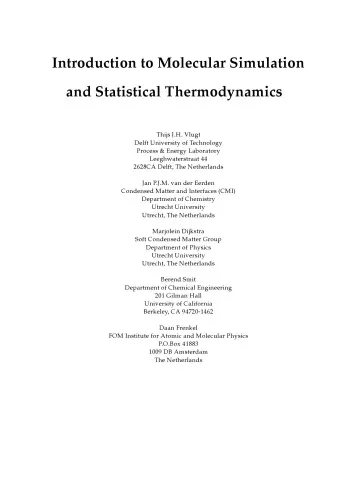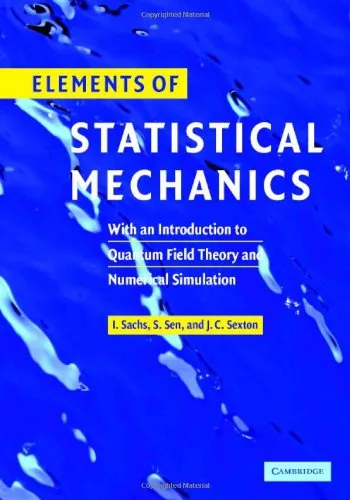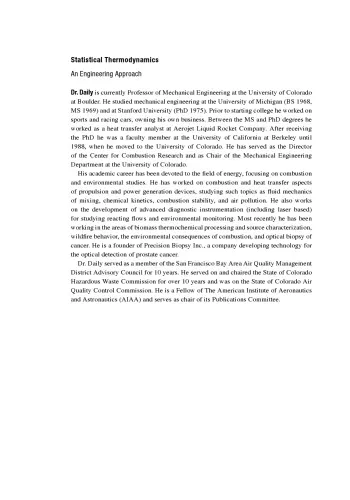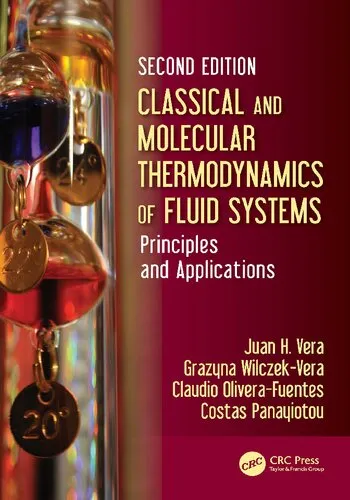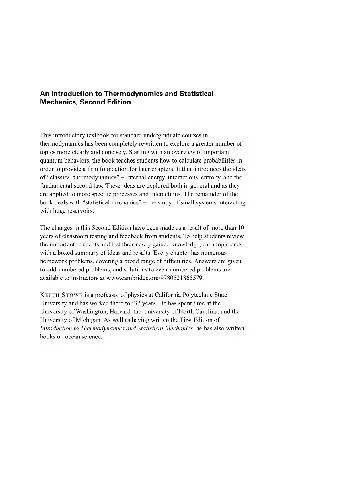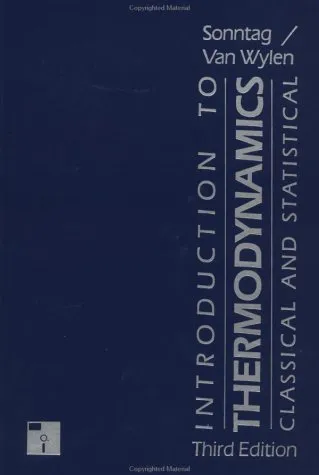Introduction to Molecular Simulation and Statistical Thermodynamics
5.0
Reviews from our users

You Can Ask your questions from this book's AI after Login
Each download or ask from book AI costs 2 points. To earn more free points, please visit the Points Guide Page and complete some valuable actions.Related Refrences:
Welcome to an exploration of the invisible world of molecules and their behaviors, as detailed in "Introduction to Molecular Simulation and Statistical Thermodynamics". This book serves as a foundational guide to understanding the principles and tools that allow us to predict and analyze the properties of molecular systems.
Detailed Summary of the Book
The book begins with an exploration into the foundational concepts of statistical thermodynamics, providing readers with a thorough understanding of how microscopic interactions lead to observable macroscopic phenomena. It emphasizes the bridge between theoretical underpinnings and practical applications, making complex ideas more accessible through clear explanations and real-world examples.
Subsequent chapters delve into the methods of molecular simulation, detailing the use of algorithms and computational techniques that model the behavior of molecules in various states and interactions. Readers gain insights into Monte Carlo and molecular dynamics simulations, learning how these tools contribute to meticulous predictions about material properties and chemical processes.
Throughout the book, a balance is struck between theory and application, with discussions on both equilibrium and non-equilibrium systems. The analytical methodologies are supplemented by a rich assortment of problems and exercises that reinforce learning and application of concepts.
Key Takeaways
- Understanding the concepts of statistical ensembles and their significance in thermodynamics.
- Mastering the principles of molecular dynamics and Monte Carlo simulations.
- Grasping the application of simulation techniques to phase transitions and reaction rates.
- Exploring advanced topics such as free energy calculations and non-equilibrium molecular dynamics.
- Developing the ability to analyze simulation results and draw meaningful conclusions regarding molecular behavior and material properties.
Famous Quotes from the Book
"Molecular simulation allows us to conduct experiments without a laboratory, bridging gaps between theory and real-world phenomena."
"Statistical thermodynamics unveils the beautiful tapestry woven by the seemingly random motions of countless particles."
Why This Book Matters
The importance of "Introduction to Molecular Simulation and Statistical Thermodynamics" is evident in its widespread influence across academic and professional spectrums. As industries increasingly rely on computational methods to design materials and understand complex chemical reactions, the knowledge contained within this book becomes invaluable.
By equipping readers with deep insights into molecular simulation, the book fosters innovation in fields such as materials science, pharmaceuticals, and chemical engineering. The ability to predict how molecules behave allows for the creation of new materials with desired properties and the improvement of existing products and processes.
Moreover, the emphasis on statistical thermodynamics enriches the reader's understanding of the fundamental laws that govern natural phenomena. This understanding is crucial not only for the advancement of scientific research but also for addressing global challenges such as energy conservation and sustainability.
In summary, this book serves as an essential resource for anyone looking to deepen their understanding of molecular simulation and statistical thermodynamics. It is crafted not only to educate but also to inspire, providing readers with the tools they need to venture into the molecular landscape and make meaningful contributions to science and technology.
Free Direct Download
You Can Download this book after Login
Accessing books through legal platforms and public libraries not only supports the rights of authors and publishers but also contributes to the sustainability of reading culture. Before downloading, please take a moment to consider these options.
Find this book on other platforms:
WorldCat helps you find books in libraries worldwide.
See ratings, reviews, and discussions on Goodreads.
Find and buy rare or used books on AbeBooks.
1290
بازدید5.0
امتیاز0
نظر98%
رضایتReviews:
5.0
Based on 0 users review
Questions & Answers
Ask questions about this book or help others by answering
No questions yet. Be the first to ask!
